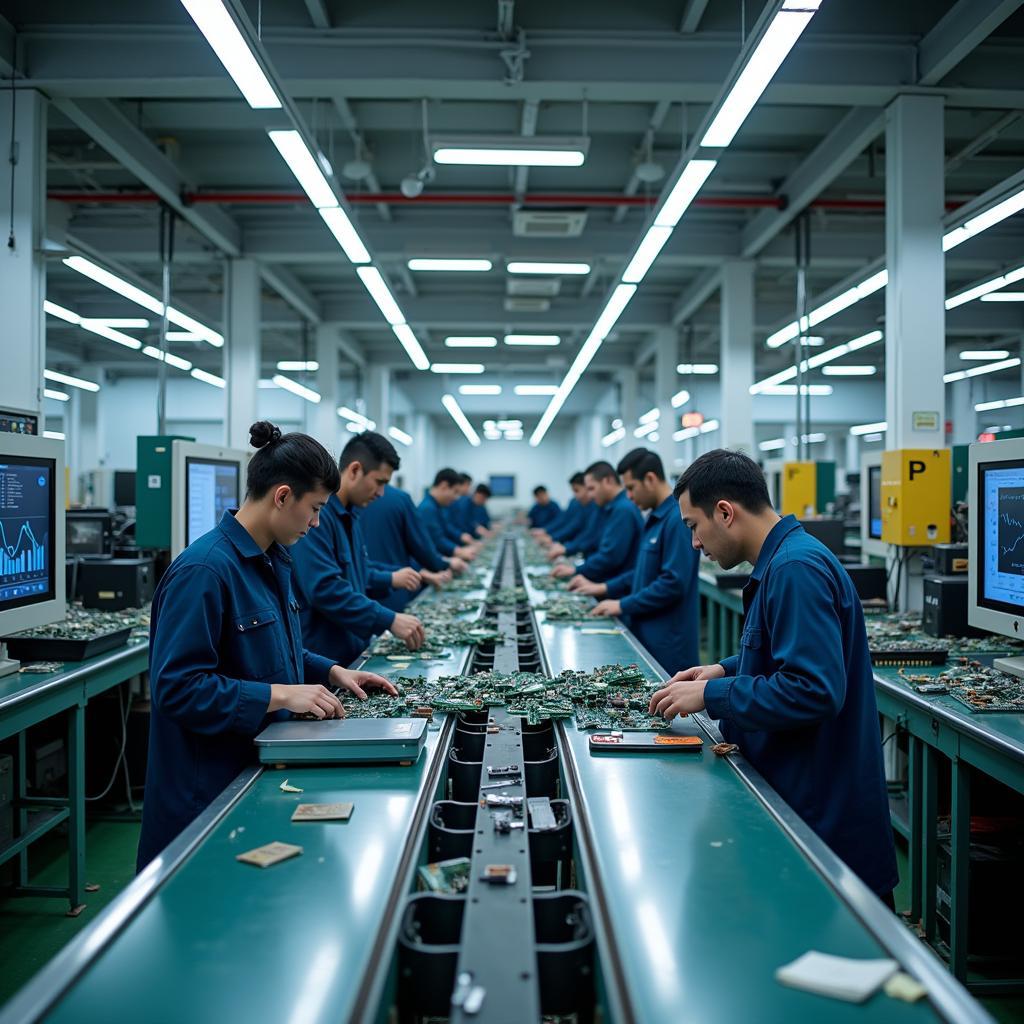The ASEAN Economic Community (AEC) is a landmark initiative by the Association of Southeast Asian Nations (ASEAN) to create a single market and production base for its ten member states. Established in 2015, the AEC seeks to enhance regional integration, promote economic growth, and improve the global competitiveness of Southeast Asia. This article delves into the intricacies of the AEC, exploring its objectives, key features, benefits, and challenges.
The Vision of an Integrated ASEAN
The AEC aims to achieve economic integration through four pillars:
- A single market and production base: This pillar focuses on free flow of goods, services, investments, and skilled labor within ASEAN.
- A highly competitive economic region: This involves creating a level playing field for businesses, promoting innovation, and enhancing consumer protection.
- Equitable economic development: The AEC strives to reduce development gaps among member states and ensure opportunities for all.
- ASEAN’s integration into the global economy: This pillar focuses on strengthening ASEAN’s position in international trade and investment.
These pillars work in tandem to create a more prosperous and interconnected ASEAN.
Key Features and Mechanisms of the AEC
The AEC employs several mechanisms to achieve its objectives, including:
- Trade facilitation: ASEAN has implemented various agreements to streamline customs procedures, simplify trade documentation, and reduce non-tariff barriers.
- Investment liberalization: The AEC encourages cross-border investments and provides a more predictable and transparent investment environment for businesses.
- Free movement of skilled labor: Professionals in certain sectors can move more easily within ASEAN, facilitating knowledge transfer and economic growth.
- Infrastructure development: ASEAN is investing heavily in improving regional connectivity through projects focusing on transportation, energy, and digital infrastructure.
- Economic cooperation: Member states collaborate on various initiatives, such as financial integration, food security, and disaster management.
 Business Meeting in ASEAN
Business Meeting in ASEAN
Benefits and Opportunities of the AEC
The AEC brings numerous benefits and opportunities for businesses, investors, and citizens within ASEAN:
- Larger market access: Businesses gain access to a combined market of over 650 million consumers.
- Reduced trade costs: Lower tariffs and simplified procedures make it cheaper and easier to trade within the region.
- Increased investment flows: The AEC attracts more foreign direct investment, creating jobs and boosting economic growth.
- Enhanced competitiveness: Businesses become more competitive through economies of scale and access to a wider pool of resources.
- Improved living standards: Economic growth and development lead to higher incomes, better jobs, and improved living standards for citizens.
For countries like the Philippines, the AEC has opened doors to new markets and boosted its export sector. To learn more about the specific advantages for the Philippines, you can read our article on advantages of asean in the philippines.
Challenges and the Road Ahead
While the AEC presents significant opportunities, it also faces challenges:
- Non-tariff barriers: Despite progress in trade facilitation, non-tariff barriers and regulatory differences still hinder intra-ASEAN trade.
- Implementation gaps: Effective implementation of AEC agreements and initiatives remains a challenge in some member states.
- Development disparities: Large development gaps persist between member states, requiring continued efforts to promote inclusive growth.
- Geopolitical complexities: Regional and global geopolitical dynamics can impact ASEAN’s economic integration efforts.
Addressing these challenges requires strong political will, effective regional cooperation, and continued dialogue between governments, businesses, and civil society.
The Future of the AEC
The AEC is a work in progress, but its potential is undeniable. As ASEAN continues to deepen regional integration and address existing challenges, the AEC will play a crucial role in driving sustainable and inclusive growth, creating jobs, and improving the lives of millions in Southeast Asia. The journey toward a fully integrated and globally competitive ASEAN Economic Community requires ongoing commitment and collaboration. By leveraging its collective strengths and embracing a future of shared prosperity, ASEAN can unlock its full economic potential and secure a brighter future for its people.
Frequently Asked Questions (FAQ)
1. What is the main goal of the AEC?
The main goal of the AEC is to create a single market and production base for ASEAN, facilitating the free flow of goods, services, investments, and skilled labor.
2. When was the AEC established?
The AEC was established in 2015.
3. How many countries are part of the AEC?
There are ten member states in the AEC: Brunei, Cambodia, Indonesia, Laos, Malaysia, Myanmar, the Philippines, Singapore, Thailand, and Vietnam.
4. How does the AEC benefit businesses?
The AEC provides businesses with a larger market, reduced trade costs, increased investment opportunities, and enhanced competitiveness.
5. What are some challenges facing the AEC?
Some challenges include non-tariff barriers, implementation gaps, development disparities, and geopolitical complexities.
Need Support?
Contact us at Phone Number: 0369020373, Email: [email protected] Or visit us at: Thon Ngoc Lien, Hiep Hoa, Bac Giang, Vietnam. We have a 24/7 customer service team.
